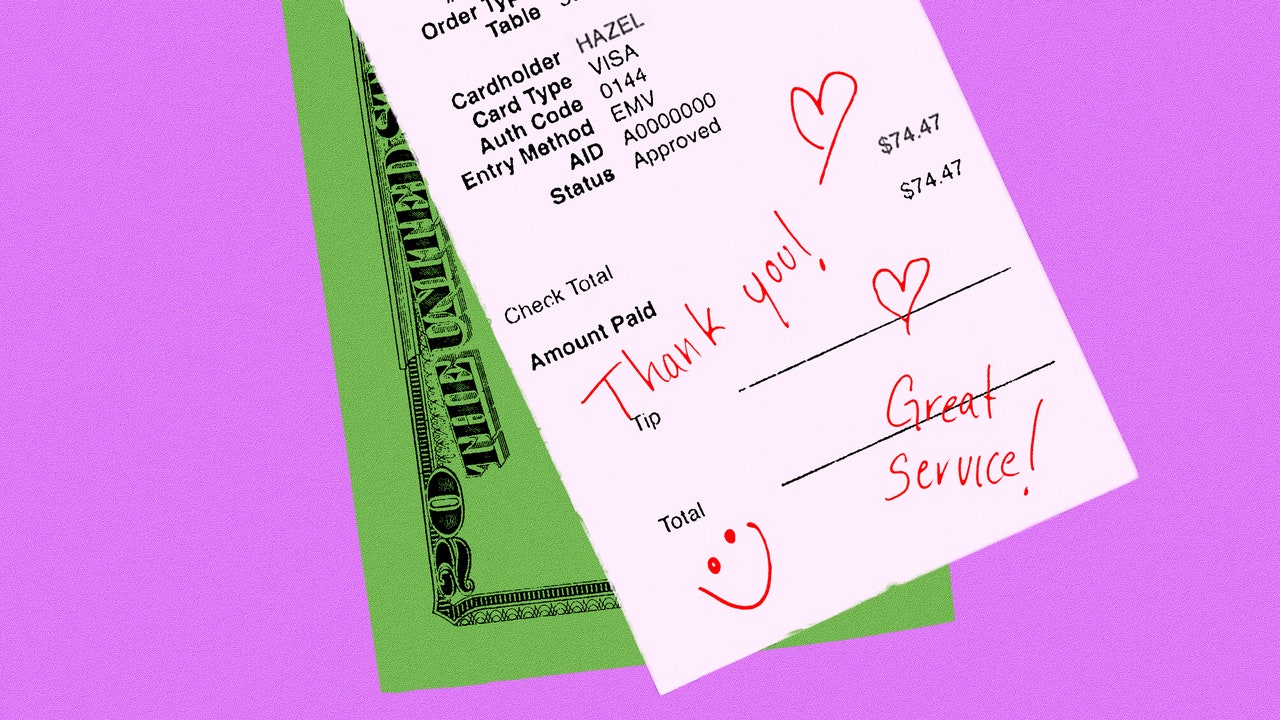During the pandemic, her employers didn’t want customers touching the handheld payment terminal for safety reasons, so the staff was asked to prompt customers verbally for their tip choice. Tipping percentage went up dramatically, and management allowed staff to continue the practice. Reactions from customers were mixed—not everyone was on board to add a gratuity.
On one occasion, a customer asked Wilson if she could enter the tip amount herself rather than declare it. Wilson apologized and explained the policy. “Ok, then, never mind,” the woman said. She left no tip. Many customers still perceive counter service as less work, and therefore undeserving of tips.
“Customers have been living in a bubble of lacking information,” says Wilson, “where we, as restaurant workers, have kept our complaints to ourselves and restaurant owners have coddled the customers in order to keep making money.” The pandemic has put tipping under a microscope, which Wilson says makes some customers uncomfortable. “It’s only in the last couple of years that that bubble has started to burst,” she adds, “where we’ve said, ‘Here’s what we’re actually doing, here is what our jobs entail, and this is what we need in return.’”
At the bakery where Wilson works, the entire staff shares tips equally, including a few kitchen positions. She knows she could make more money elsewhere, but she prefers working in an environment where tips are distributed more equitably.
Although kitchen staff don’t usually benefit directly from tips, many restaurants are inviting back of house employees into the tip pool, in cities and states where this practice is legal. Caitlin Briggs, a cook in Milwaukee, moved from their hotel restaurant job to a line cook position in a James Beard-nominated restaurant because they heard that the kitchen staff received 2% of all tips.
“The tip sharing is what brought me in the door to apply,” Briggs says, “because any owner that cares enough about the quality of pay for its employees, is generally a place that’s going to respect me as a human.” Even though Briggs’ hourly wage dropped $1.50, with the added boost from tips, their income went up 50 percent from their previous job. Briggs believes sharing in the tip pool has also had a significant impact on the quality of the work among their fellow cooks.
According to a recent report on industry trends released by the Boston-based restaurant point-of-sale platform Toast, tipping has remained rather steady since the early days of the pandemic, although full-service restaurants routinely see higher tip percentages compared with quick-service restaurants. Toast’s report showed that the average tip percentage for full-service restaurants was 19.9% versus 17.0% for quick-service restaurants over approximately 62,000 locations that use its platform across the U.S.
Wilson says that many customers at her counter do understand tipping culture, and she estimates that almost 75 percent of her customers leave at least something in the way of a tip. One of her regulars routinely tips 25 percent every time he buys anything, even on the smallest order. “His 25 percent tip doesn’t do much for my income, but it says: ‘You recognize what I’m doing, and you recognize your role in it.’ That’s what tipping has in many ways become.”
Whenever the debate over who should be tipped and how much erupts again, the conversation almost always centers the paying guest. It’s ironic to use the word “fatigue” to frame the feeling of tipping (or non-tipping) diners, the only people involved in the interaction that aren’t doing any work.
